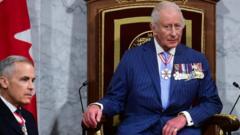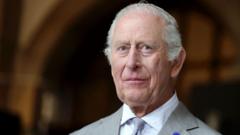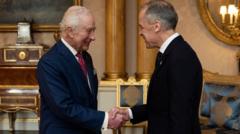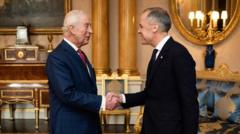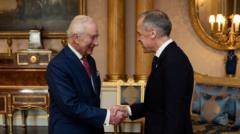**The British royal family, now seeing the discontinuation of its private train service, leaves behind a legacy that began with Queen Victoria's inaugural journey in the 19th century.**
**The End of an Era: Britain's Royal Train Retired Amid Cost-Cutting Measures**

**The End of an Era: Britain's Royal Train Retired Amid Cost-Cutting Measures**
**As the iconic royal train, a historic mode of travel for Britain's monarchy, is retired, the decision has stirred reflections on its significance and the changing landscape of royal traditions.**
The royal train, a symbol of British heritage for over 150 years, is officially retiring as part of Buckingham Palace's recent cost-cutting initiatives. This train has served as a means of transportation for the royal family during their official engagements and personal travels, embodying both luxury and a deep-rooted tradition within the monarchy.
The decision to retire this iconic mode of transport has not come without reactions. For many, the train represented a significant link to the past, connecting the present monarch, King Charles III, with the legacies of previous royals, extending all the way back to Queen Victoria, the first monarch to utilize a train for travel in June 1842. Initially hesitant about the speed of trains—which she believed could induce madness—Queen Victoria ultimately endorsed the experience, stating in her journal that it was “delightful and so quick.”
Queen Victoria’s royal train was uniquely designed, featuring opulent decorations such as 23-karat gold and luxurious silk, a standard that persisted into the early 1900s. However, she famously abstained from dining on board, attributing concern for her digestion.
As times change and financial strains increase, the cessation of the royal train symbolizes a broader shift within the monarchy. While efforts to modernize and streamline royal operations seem practical, they may also align with ongoing debates surrounding the relevance of the monarchy itself in contemporary society. Conservative perspectives may view this transition as a loss to royal tradition and heritage, while progressive viewpoints may advocate for necessary changes that reflect fiscal responsibility.
In conclusion, as the royal train makes its final journey into history, it marks the end of an era for the British monarchy, prompting contemplation on the importance of tradition versus modernization within this iconic institution.
The decision to retire this iconic mode of transport has not come without reactions. For many, the train represented a significant link to the past, connecting the present monarch, King Charles III, with the legacies of previous royals, extending all the way back to Queen Victoria, the first monarch to utilize a train for travel in June 1842. Initially hesitant about the speed of trains—which she believed could induce madness—Queen Victoria ultimately endorsed the experience, stating in her journal that it was “delightful and so quick.”
Queen Victoria’s royal train was uniquely designed, featuring opulent decorations such as 23-karat gold and luxurious silk, a standard that persisted into the early 1900s. However, she famously abstained from dining on board, attributing concern for her digestion.
As times change and financial strains increase, the cessation of the royal train symbolizes a broader shift within the monarchy. While efforts to modernize and streamline royal operations seem practical, they may also align with ongoing debates surrounding the relevance of the monarchy itself in contemporary society. Conservative perspectives may view this transition as a loss to royal tradition and heritage, while progressive viewpoints may advocate for necessary changes that reflect fiscal responsibility.
In conclusion, as the royal train makes its final journey into history, it marks the end of an era for the British monarchy, prompting contemplation on the importance of tradition versus modernization within this iconic institution.








